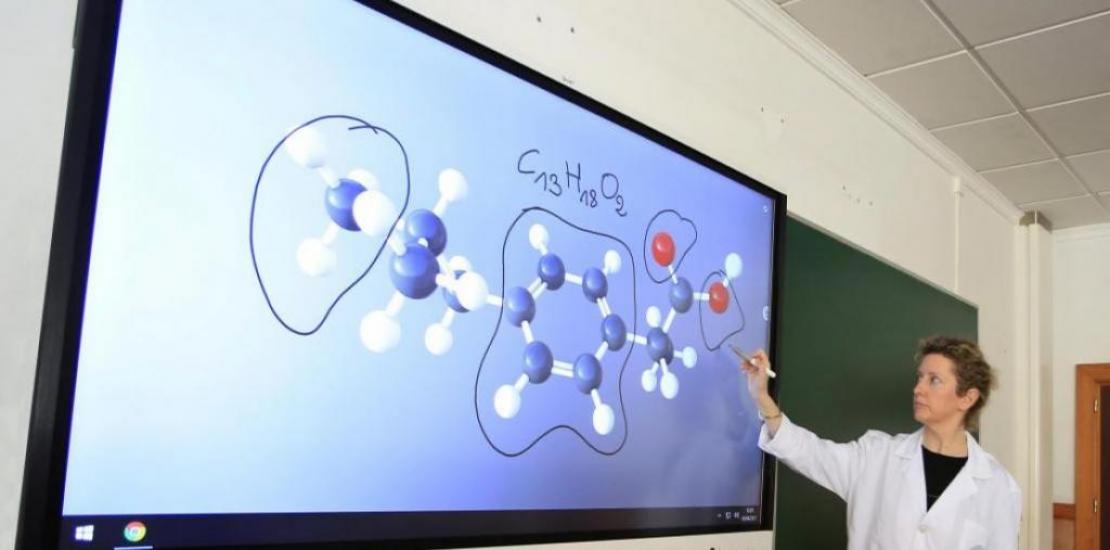UCAM installs latest generation digital screens in its classrooms
They entail a technological leap that allows implementing more interactive methodologies that boost collaborative work, facilitating access to a wide range of multimedia resources in real time
Academic Year 2021-22. During a lesson of the Bachelor’s Degree in Civil Engineering, the teacher enters the classroom, greets his students and switches on the 86-inch 4K Ultra HD screen. After a few seconds, and with maximum definition, he shows the structure of a bridge and starts his lesson, during which he manipulates the element with his hands and all of his movements and annotations (made with his finger or with a stylus) are reflected on the students’ computers. One of them has a doubt and, from his own screen, he manipulates the element in order to ask his question. All of the students, both the ones who are in class and those who are at home, follow the lesson and actively participate in it. Everything is being recorded and they will be able to watch it whenever they want.
This example gives an idea of the technological leap implemented by UCAM through the purchase of almost 300 latest generation digital blackboards that are going to modify the way in which university teaching is done. These screens allow a total interconnection between the teacher and the students, thus multiplying the possibilities of collaborative work. The interactions are reflected in real time and with no interruptions thanks to the use of a latest generation Wi-Fi network. Furthermore, they will be able to access to a wide range of multimedia resources, carry out video-calls with experts and pose real-time surveys that students can answer from their mobile phones.
Its potential can be used in all areas of knowledge; from the analysis of a structure in Architecture, the creation of graphs starting from mathematical formulas for an IT class, the making of annotations on a text to highlight the most important information in Law, to the viewing of a video made by the Primary Education students for a practical exercise, etc.
Samuel Mendoza, director of Infrastructures and Digital Development of UCAM, shows his satisfaction for this news since “it represents an advancement for our Strategic Plan of Digital Transformation”. Belén López, Vice-Chancellor for On-line Teaching, assures that the technological leap is huge and that it will reflect on “the exposed material, since it is going to be way more attractive and it will have a clear multimedia component”. Another fundamental element consists in “attention to diversity, since these screens are adapted for students with hearing or visual impairment”.
Advanced developments of UCAM
One of the commitments of UCAM is the creation of contents to maximise the potential of the most advanced technological tools. The first lessons with virtual reality glasses were possible thanks to the User Experience Unit, which created contents for those sessions. A sailing class by the Bachelor’s Degree in Physical Activities and Sports Sciences (CAFD), a class on the coronavirus in Medicine or the presentation of a patent in Dentistry, are just some of the examples of the first developments created at UCAM through virtual reality.
High technology in clinical simulation
UCAM has been the first in Spain to implement the most-advanced clinical simulation as an essential part of the training of its Health Sciences students. In this field, the incorporation of latest generation devices, such as the anatomic digital table, the ‘Body Interact’ clinical reasoning table, Sectra, etc., has been extremely important.




